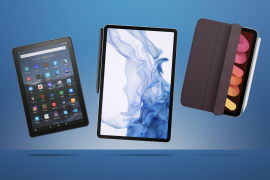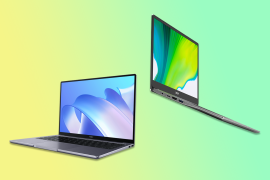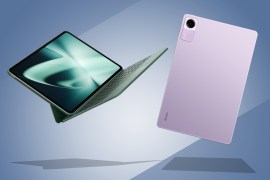Oppo Reno 11 F 5G review: excelling at the entry-level
It has value on its side - but doesn't really stand out anywhere else
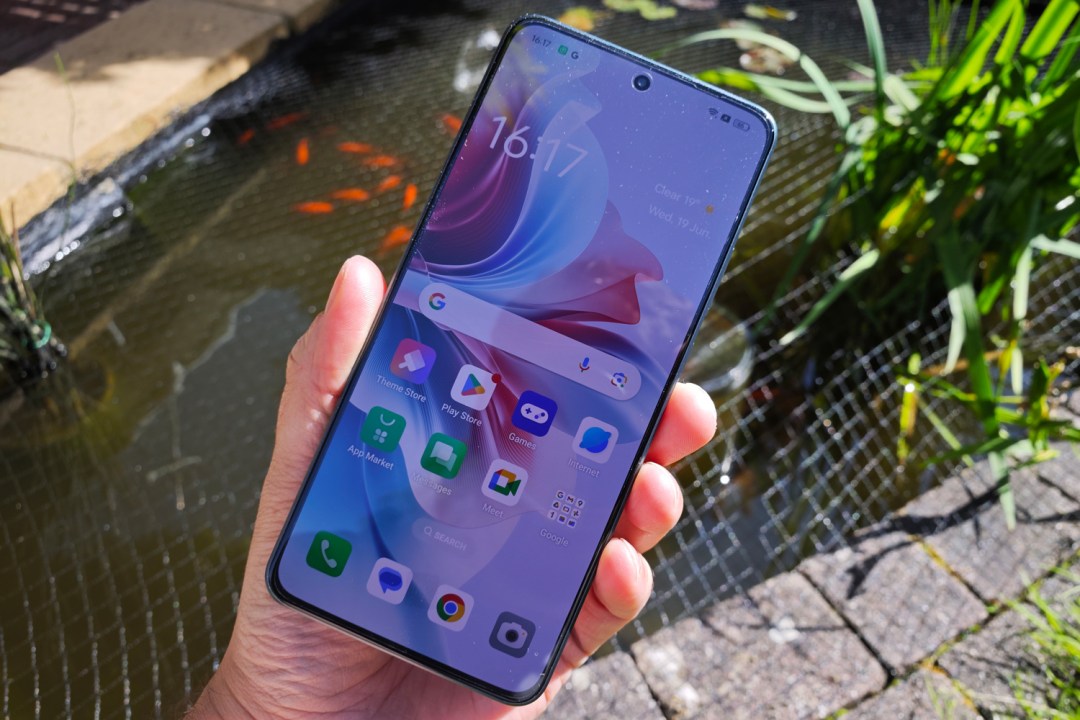
Stuff Verdict
Display, cameras, storage and battery life all rank well among affordable phones – but the Oppo Reno 11 F isn’t a strong performer, and doesn’t stand out in any one area.
Pros
- Effective main camera
- Big and bright OLED screen
- Plenty of competition at this price
Cons
- Secondary snappers aren’t that great
- Middling performance
- Bloat-packed software could be streamlined
Introduction
When Oppo announced its return to Europe after resolving a long-running patent dispute, I expected a flagship. Maybe even a foldable! Instead the firm has gone with a value-minded smartphone, which packs in a comprehensive feature list for relatively little cash. The Oppo Reno 11 F also promises a long-lasting battery and some of the best durability in its price range.
That price was dramatically lower if you took advantage of Oppo’s short-run early bird deal, but now it’s only available at full retail price. With the budget smartphone competition looking stronger than ever this year, is a handset that has already been doing the rounds in Asia and the Middle East for months now still worth your attention?
How we test smartphones
Every phone reviewed on Stuff is used as our main device throughout the testing process. We use industry standard benchmarks and tests, as well as our own years of experience, to judge general performance, battery life, display, sound and camera image quality. Manufacturers have no visibility on reviews before they appear online, and we never accept payment to feature products.
Find out more about how we test and rate products.
Design & build: IP fan
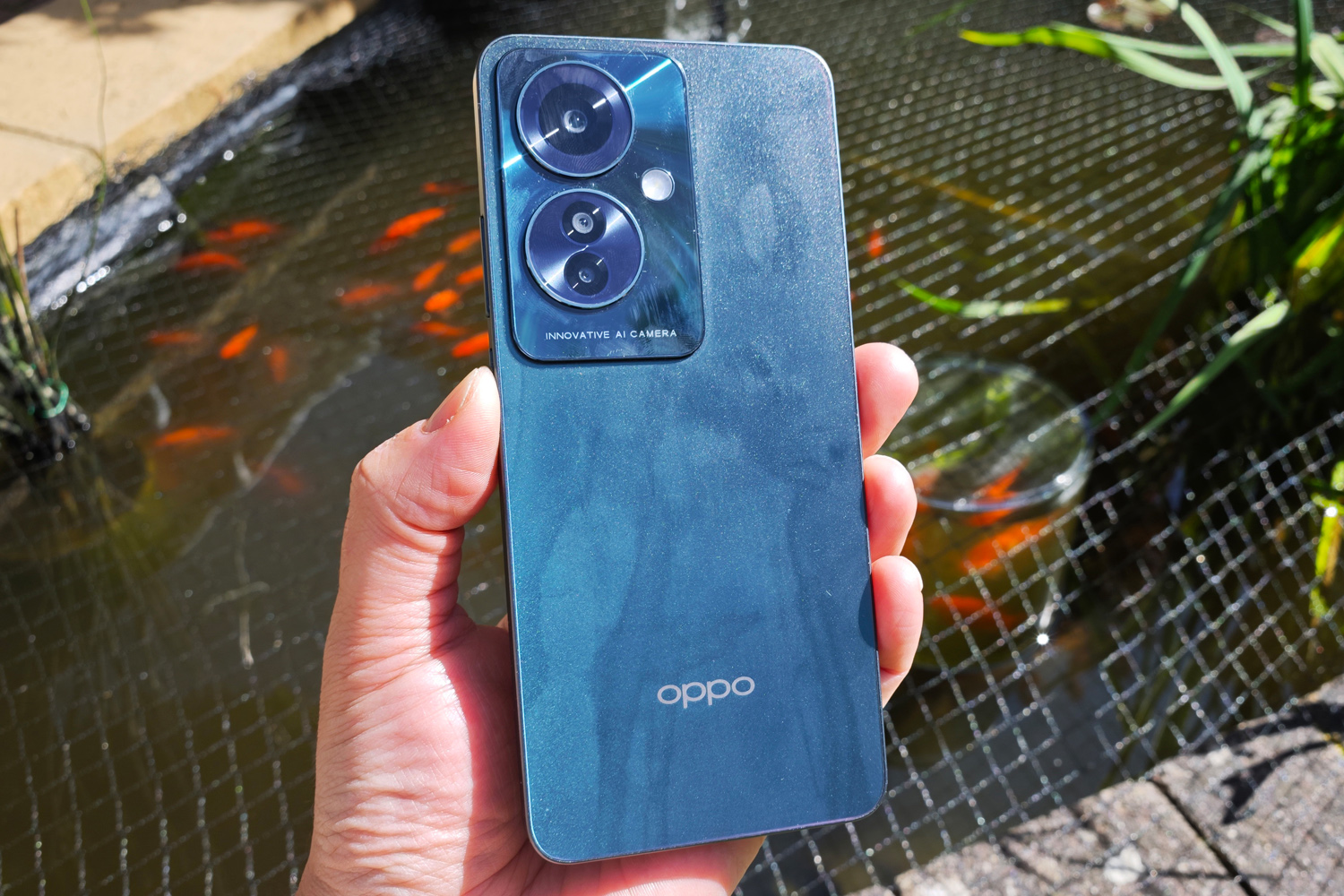
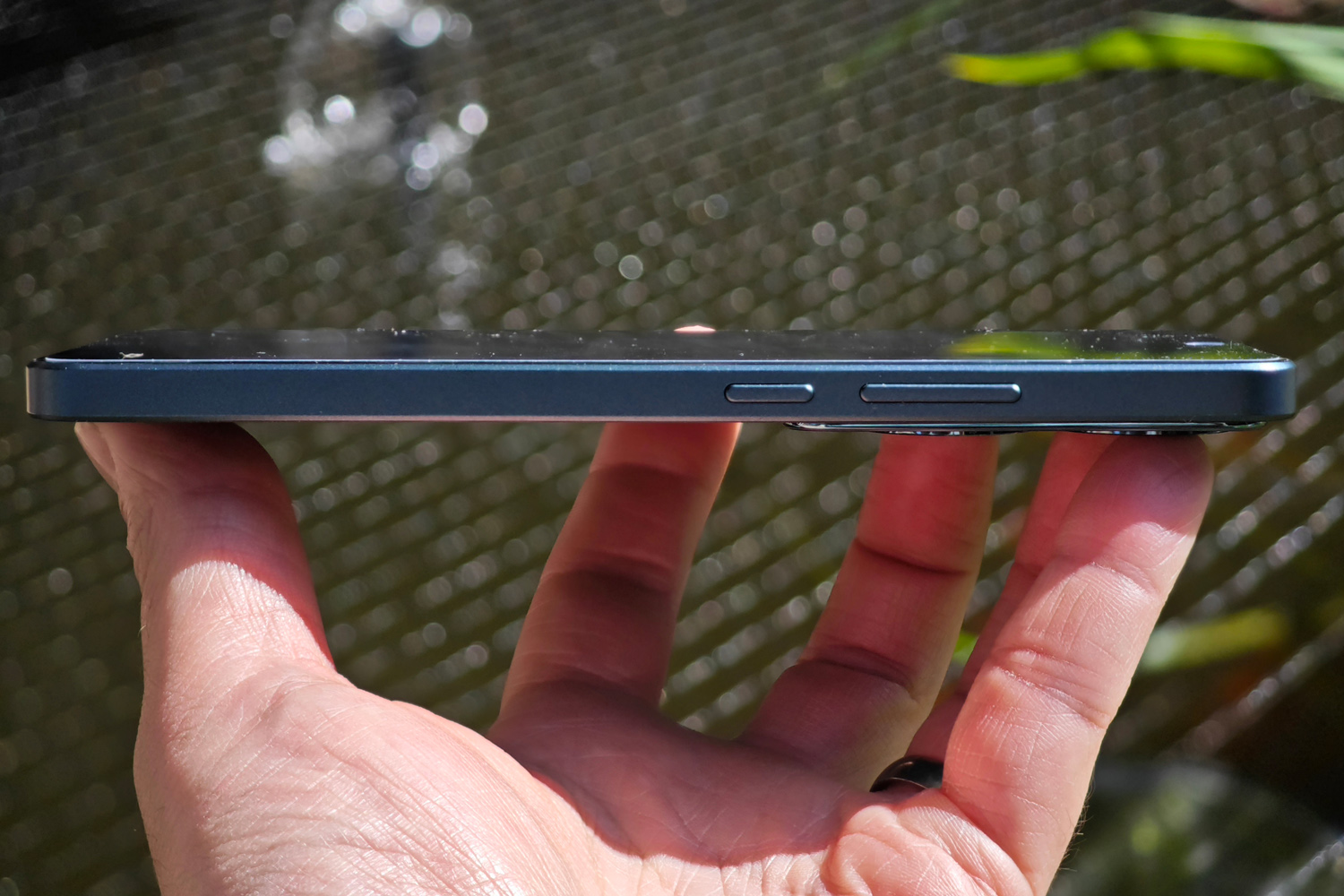
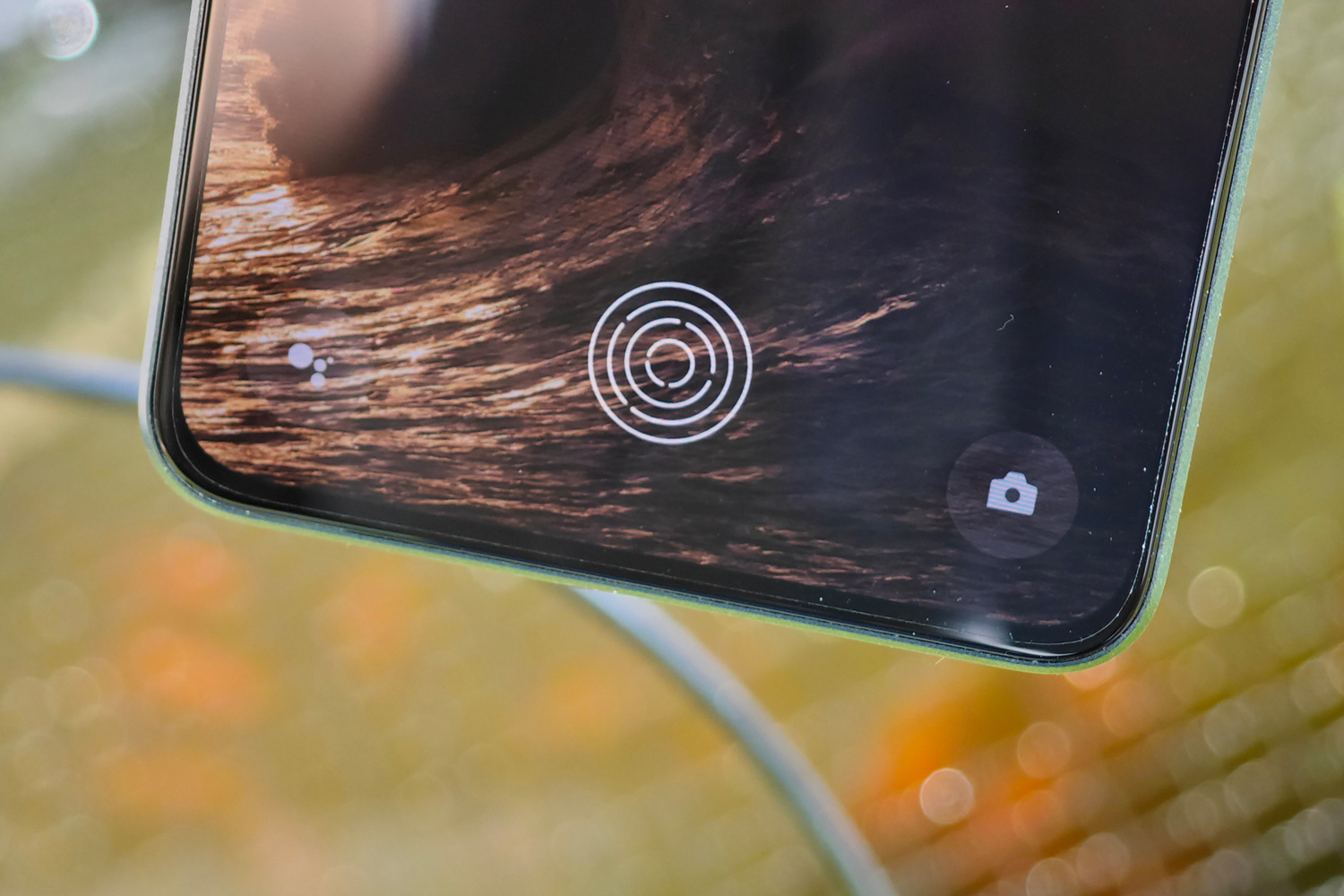
Weatherproof and water resistant gadgets are a big deal if you’re the adventurous sort. The Reno 11 F is IP65 rated, meaning dust and dirt aren’t an issue, and it’ll survive even the heaviest of downpours – if not quite full immersion. That’s a decent showing for a sub-£350 phone; the Nothing Phone 2a is only IP54, while higher rated handsets such as the Google Pixel 8a will set you back considerably more money.
Oppo makes some bold toughness claims, with one marketing slide showing the Reno 11 F getting run over by a car and living to tell the tale. I didn’t get quite so destructive, but the handset held up to several weeks of continuous use without so much as a surface scratch. Display glass aside, the entire outer frame is made from polycarbonate, which makes it very lightweight at just 177g.
It absolutely feels like plastic, meaning I could tell I was holding a budget phone whenever I took it out of my pocket. The straight sides and flat display are in line with today’s flagship phones, though, so it gives the impression of something pricier from a distance.
My Palm Green review unit is the only colour option available in the UK; other markets have more choice, including Ocean Blue and Coral Purple. I prefer the green phone’s plain rear panel to the wave effects seen on the other two, although it’s hopeless at hiding fingerprint smudges.
Speaking of fingerprints, the under-display sensor is reasonably quick and accurate. I also used Oppo’s face unlock, which is good enough to skip the lock screen but not so secure you can use it for banking apps. There’s no IR blaster here – something usually found on Oppo’s more premium models – but I appreciate the inclusion of a microSD card slot. 256GB of on-board storage is already pretty generous given the price, but being able to add more capacity later is very welcome indeed.
Screen & sound: highlight of the package
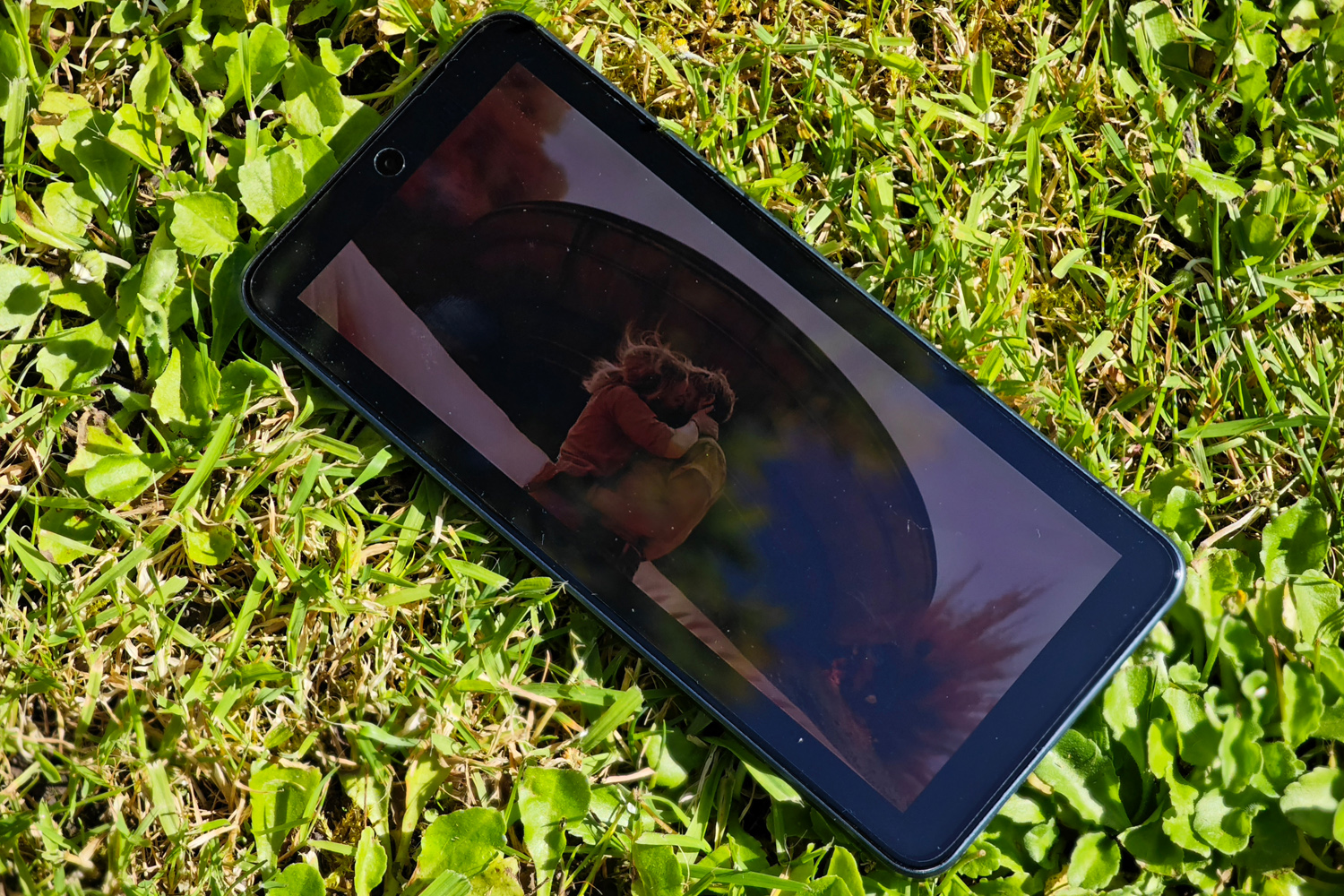
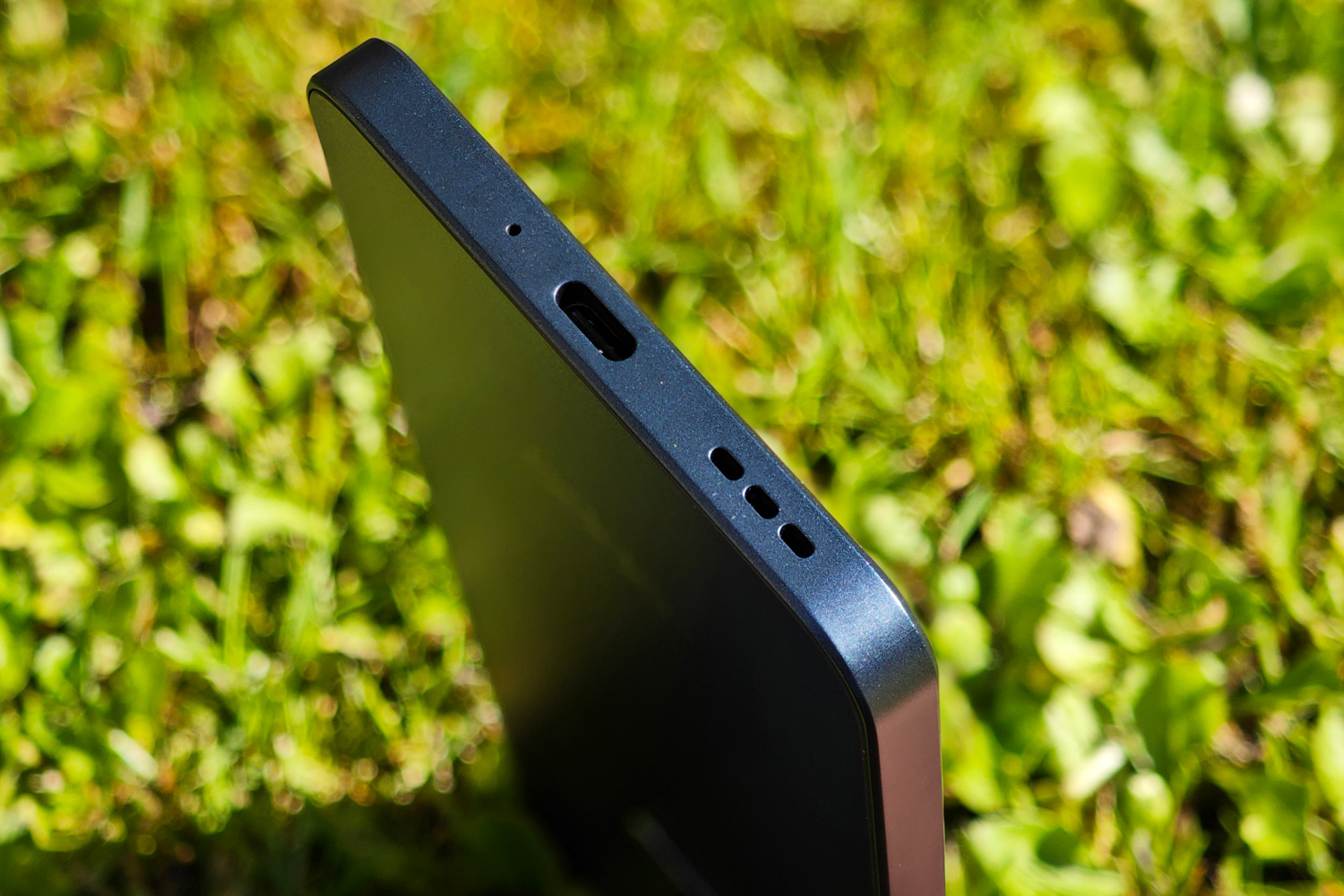
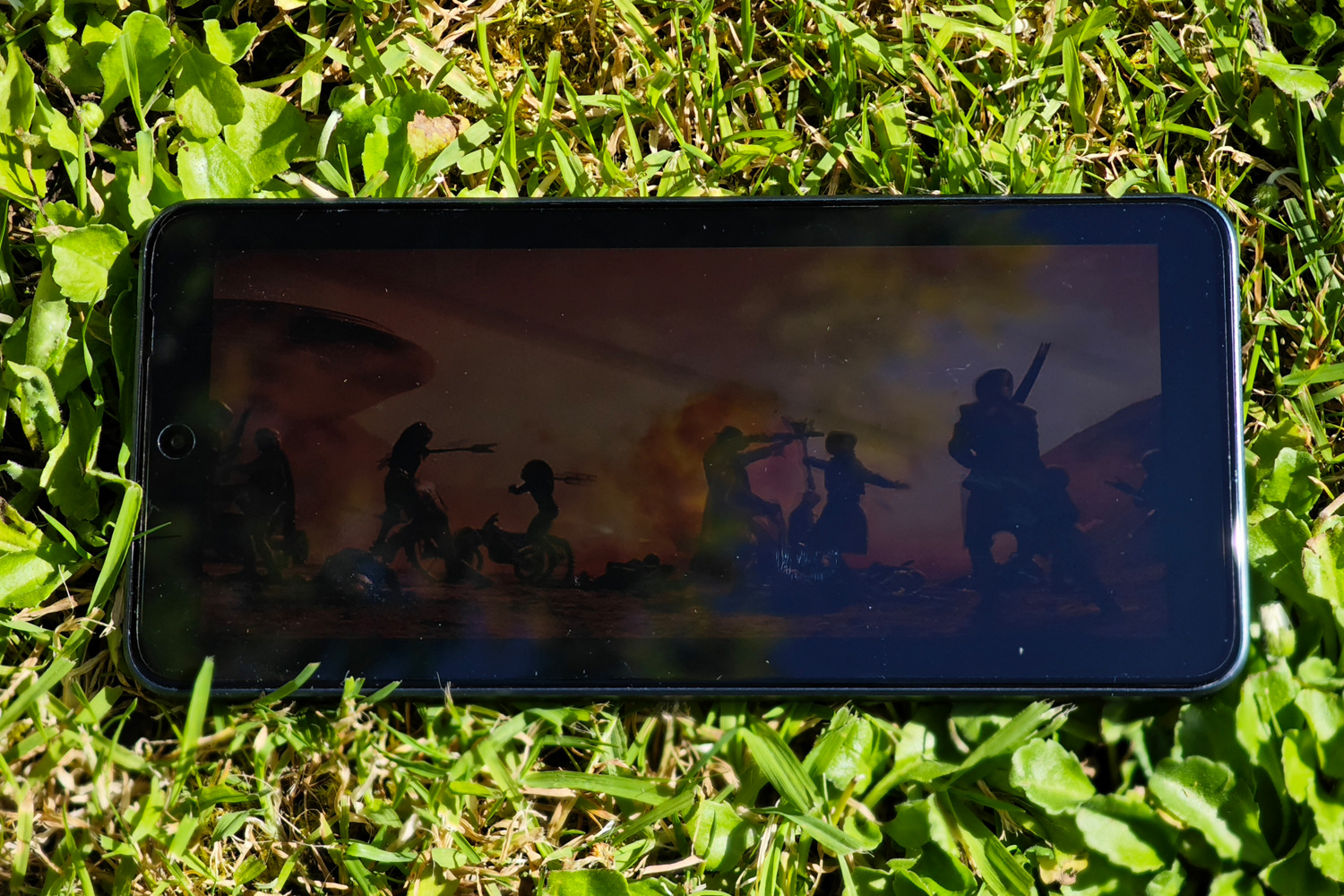
Oppo certainly hasn’t skimped on the display front, squeezing a peach of an AMOLED panel inside the Reno 11 F’s frame. At 6.7in it’s as large as many high-end smartphones, and while the 2412×1080 resolution means pixel density isn’t as high as those rivals, things still looked detailed to me at normal viewing distances.
The phone defaults to a dynamic refresh rate, switching between 60Hz and 120Hz based on the amount of onscreen movement. It felt fast to respond so scrolling felt smoother than I was expecting, given the underlying hardware – but I still preferred forcing 120Hz on all the time for the best user experience.
Colours are as rich and dynamic as I expect from OLED, with great contrast and the deepest of blacks. Officially the screen tops out at 1100 nits, which was enough for me to use the phone in direct sunlight; you’ll still want to head for the shade to watch content with darker scenes, though. You have to step up to the next price bracket to get a significantly better viewing experience.
The Reno 11 F’s single speaker can’t put in a matching performance, with the anaemic bass and slightly shrill upper frequencies all but the very best smartphones tend to deliver. While the “ultra volume” mode, which promises 300% on the volume slider, does get impressively loud, it also brings a lot of distortion; I rarely found a reason to use it.
Cameras: only one to watch
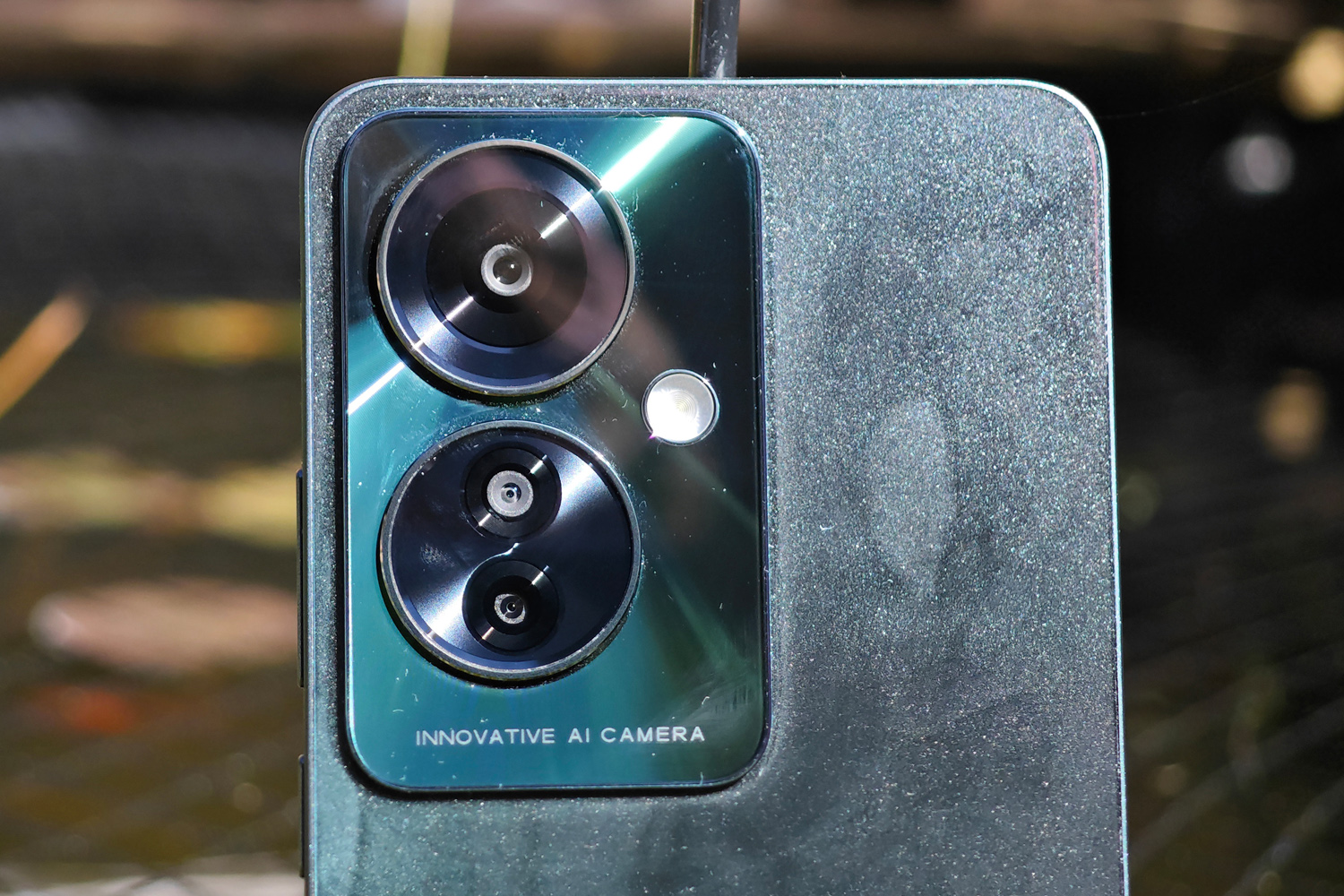
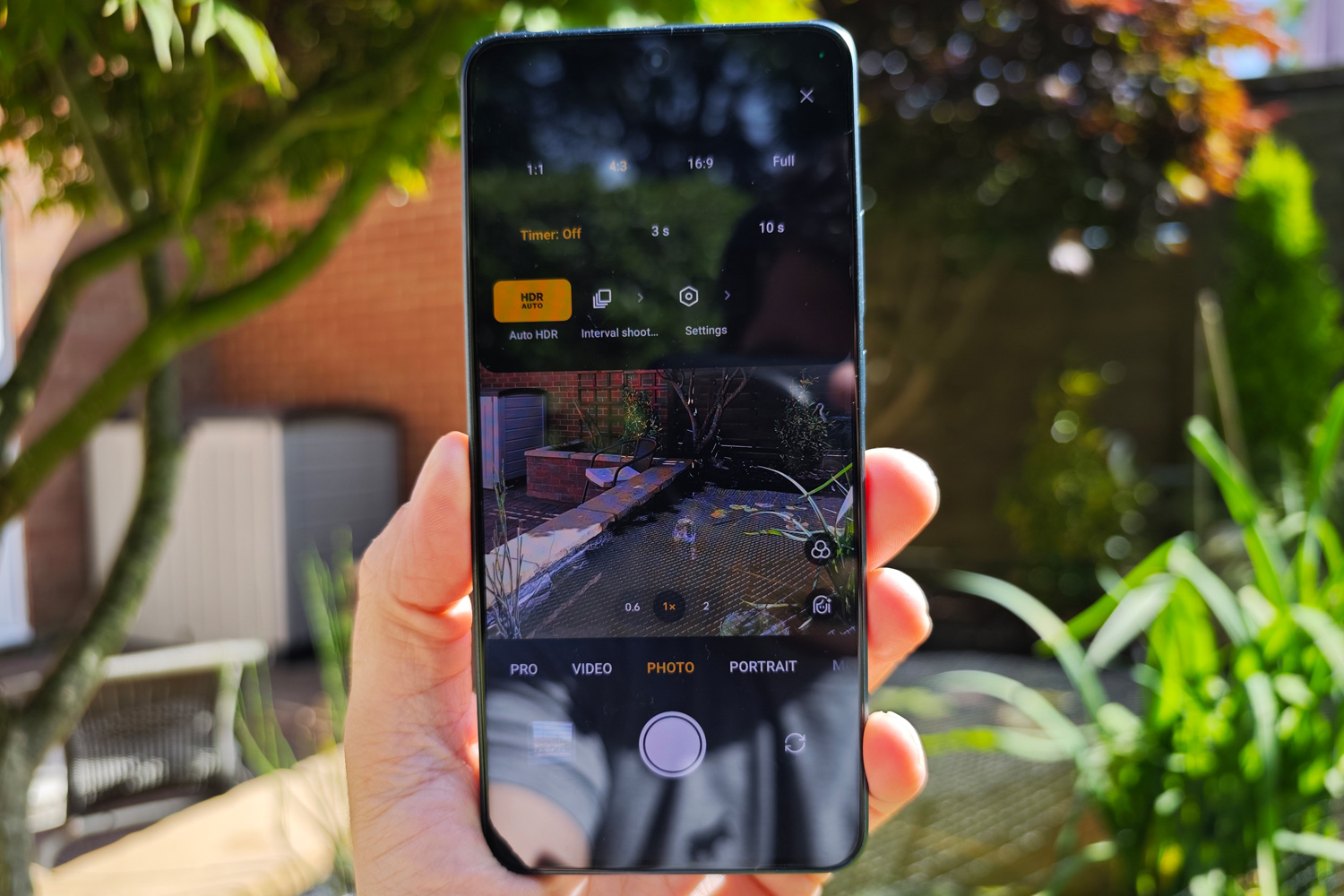
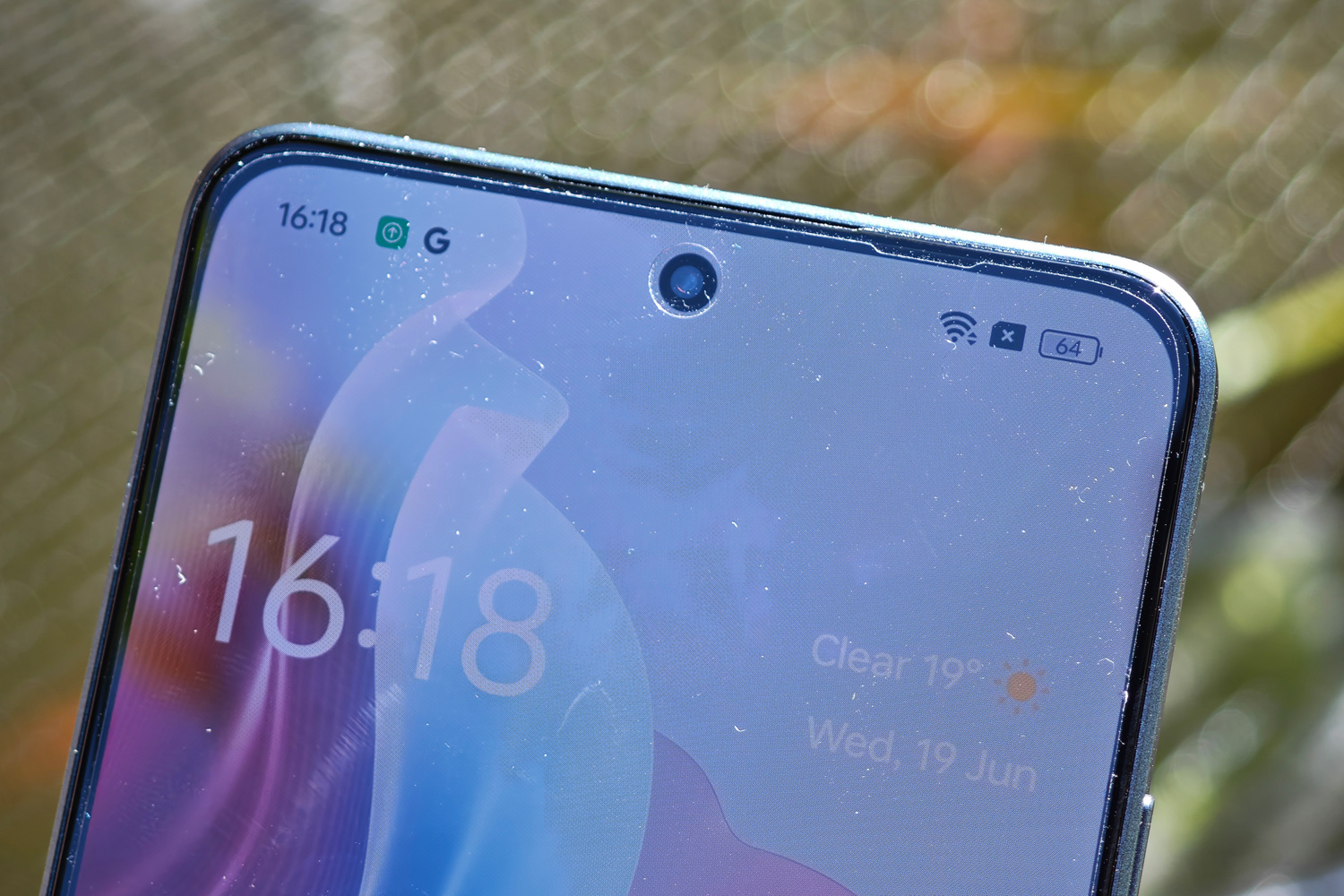
The Reno 11 F falls into the familiar budget phone trap of camera quantity over quality. There might be three sensors at the rear, but one is a 2MP macro that’s beyond basic, and another is a distinctly average 8MP ultrawide. It’s only the 64MP lead lens that’s worth your attention, along with the 32MP selfie cam up front.
It’s not the largest of sensors, and lacks optical image stabilisation (OIS), so hand shake can be an issue – particularly in low light. But Oppo’s image processing is very good, with natural colour tones and plenty of resolved detail that doesn’t rely on oversharpening. It’s usually quick to focus outdoors, even with moving subjects, although it struggles more under artificial light where shots can look a little soft.


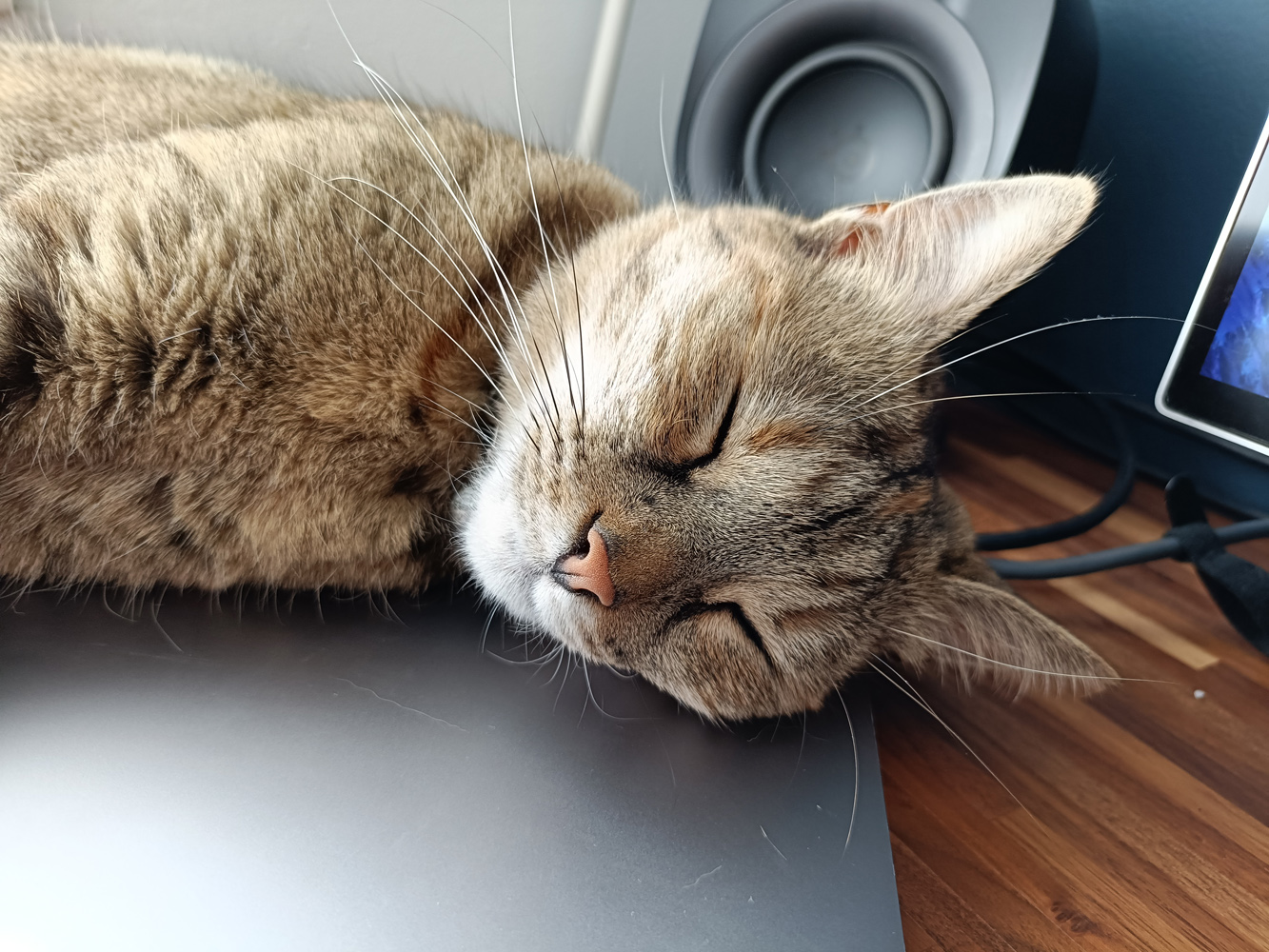







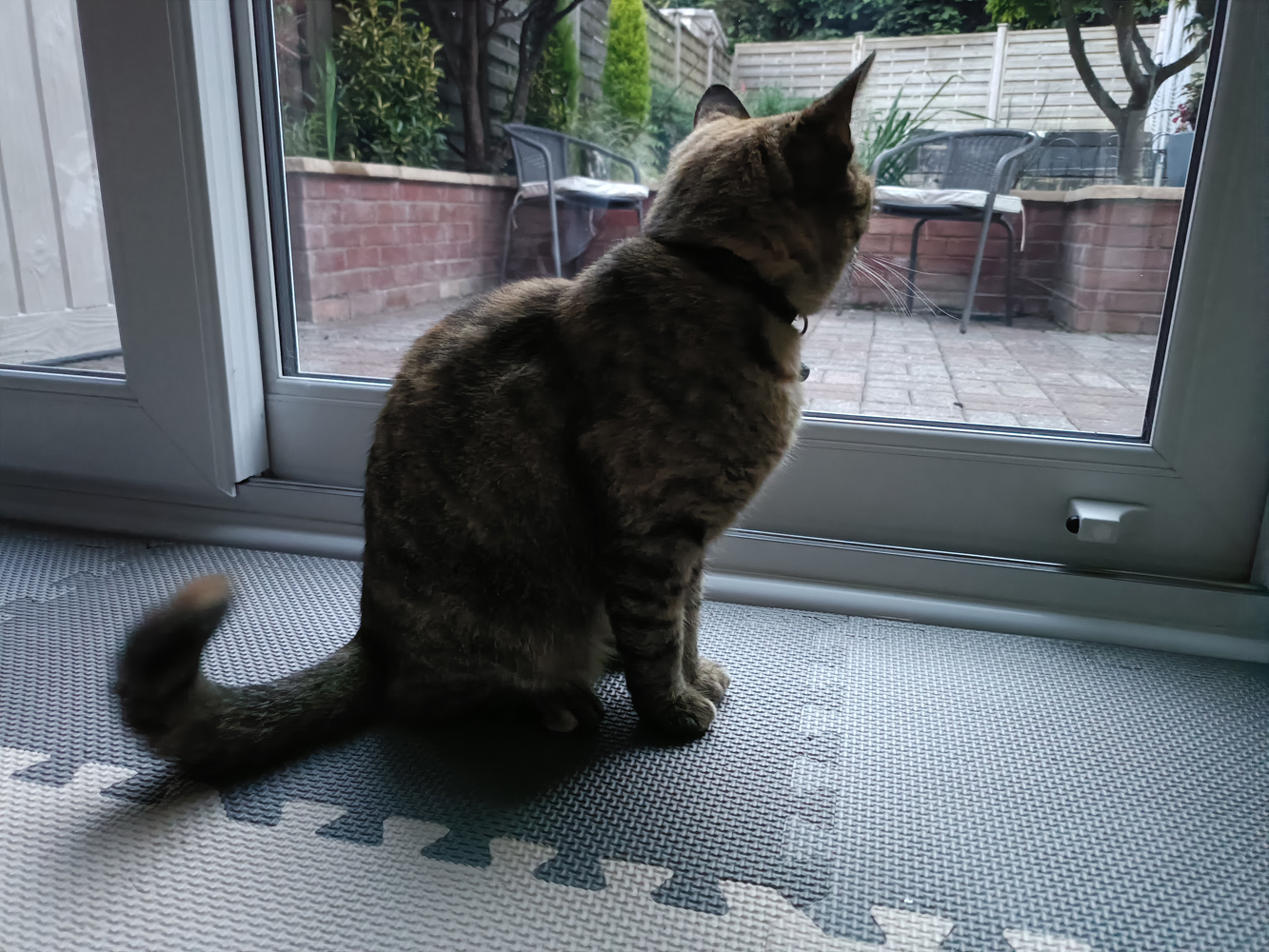



The ultrawide shows a noticeable drop off in detail, and can’t match the lead lens for sharpness or colour accuracy. It’s not like the camera app’s pro mode can help here either, as it’s restricted to the main snapper – and changing between lenses isn’t exactly rapid. I appreciated the inclusion of a 2x zoom toggle, though. This crops the sensor effectively during the day, with a dip in detail only noticeable in low light scenes.


Face retouching is enabled on the selfie camera by default, which I’m never a fan of, but it’s easy enough to switch off. The sensor is capable of clean, detailed shots, again with convincing colours, though it’s not as effective as the rear camera when balancing areas of light and shadow.
Compared to rivals with fewer – but better – sensors, the Reno 11 F is a merely OK cameraphone. With the Google Pixel 7a now regularly doing the rounds for less than £300, photographers have plenty of better options.
Software experience: lots of bloat to banish
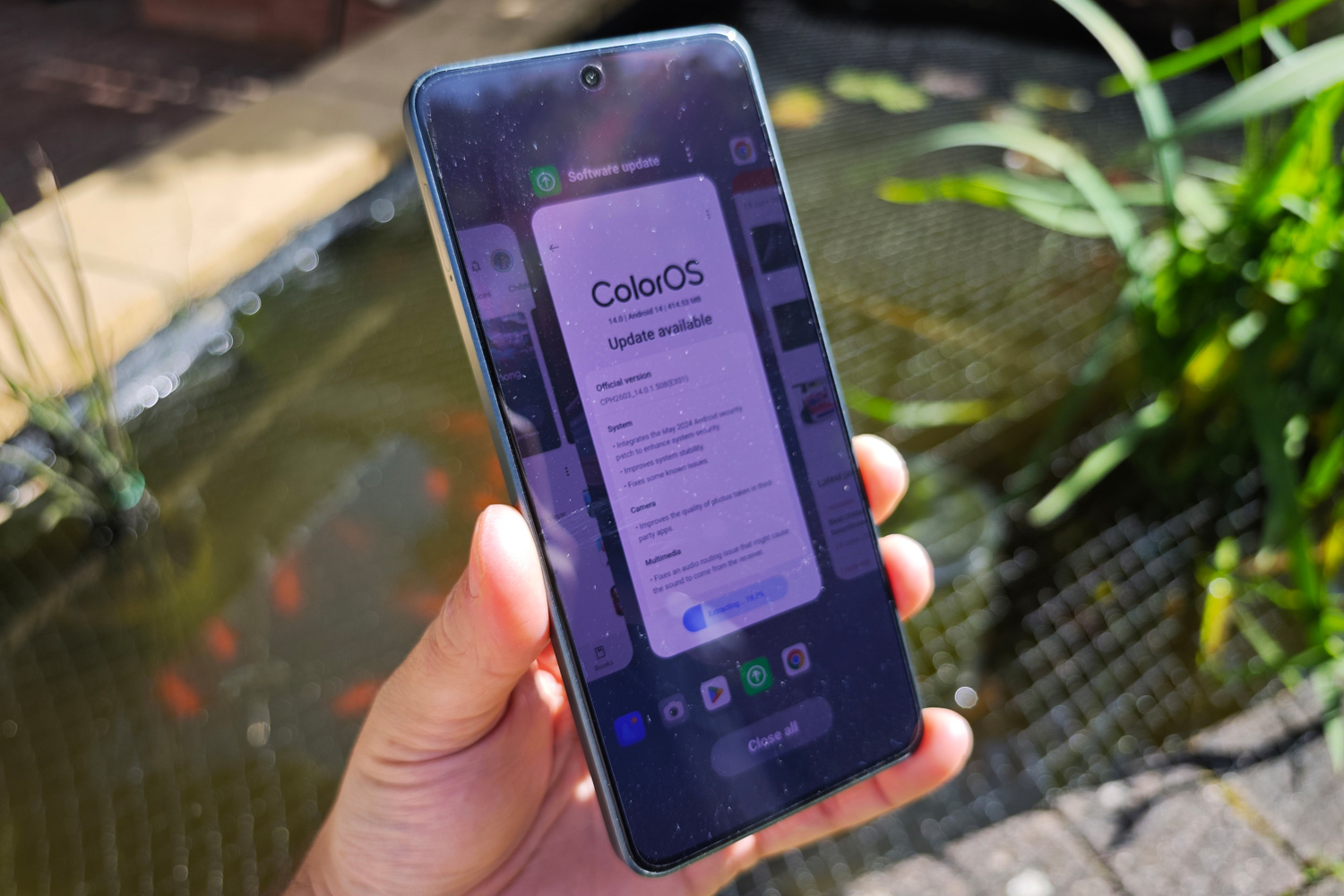

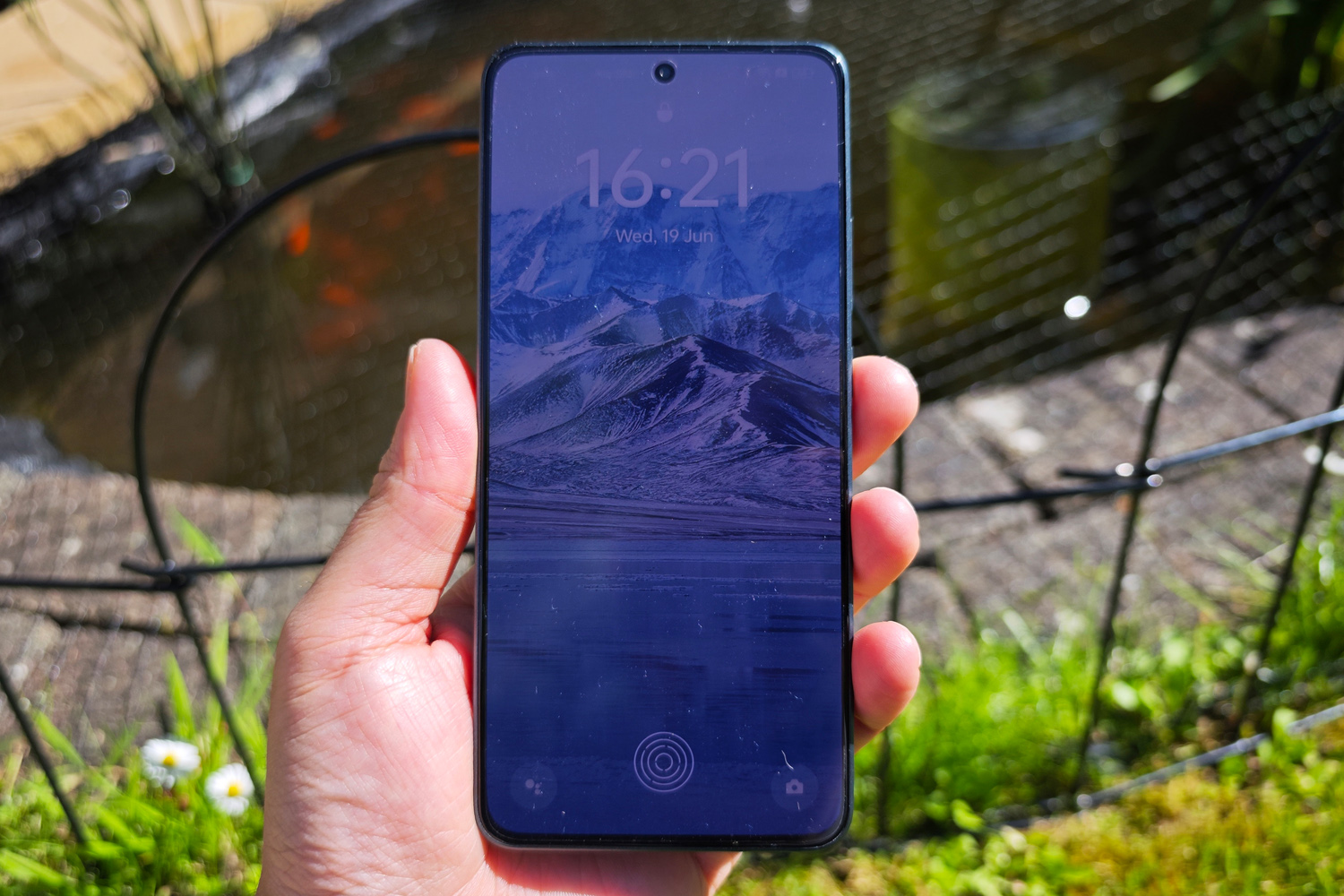
Oppo’s ColorOS interface isn’t all that removed from stock Android 14, which it sits on top of. There’s the usual smattering of bespoke app icons, a tweaked Quick Settings menu, and a more customisable home screen, complete with an extensive selection of home-grown widgets.
The one standout feature, Smart Image Matting, lets you long-press a subject in Oppo’s image gallery to cut it out and share as a sticker, for WhatsApp and other messaging apps. Apple got there first, naturally, but it was great at recognising subjects and cutting them out correctly. If you’re a chat addict it’s a useful addition.
It’s a shame Oppo goes out of its way to dump bloatware on you, though. Even after rejecting the list of suggested downloads during initial setup there were lots of third-party apps waiting for me on the homescreen. Thankfully they’re easy enough to uninstall, and this is hardly the worst offender I’ve seen recently.
I also appreciate Oppo’s commitment to three major Android updates and four years of security patches; this isn’t the best long-term support around, but it’s more than you get from many budget handsets.
Performance & battery life: just keeps going
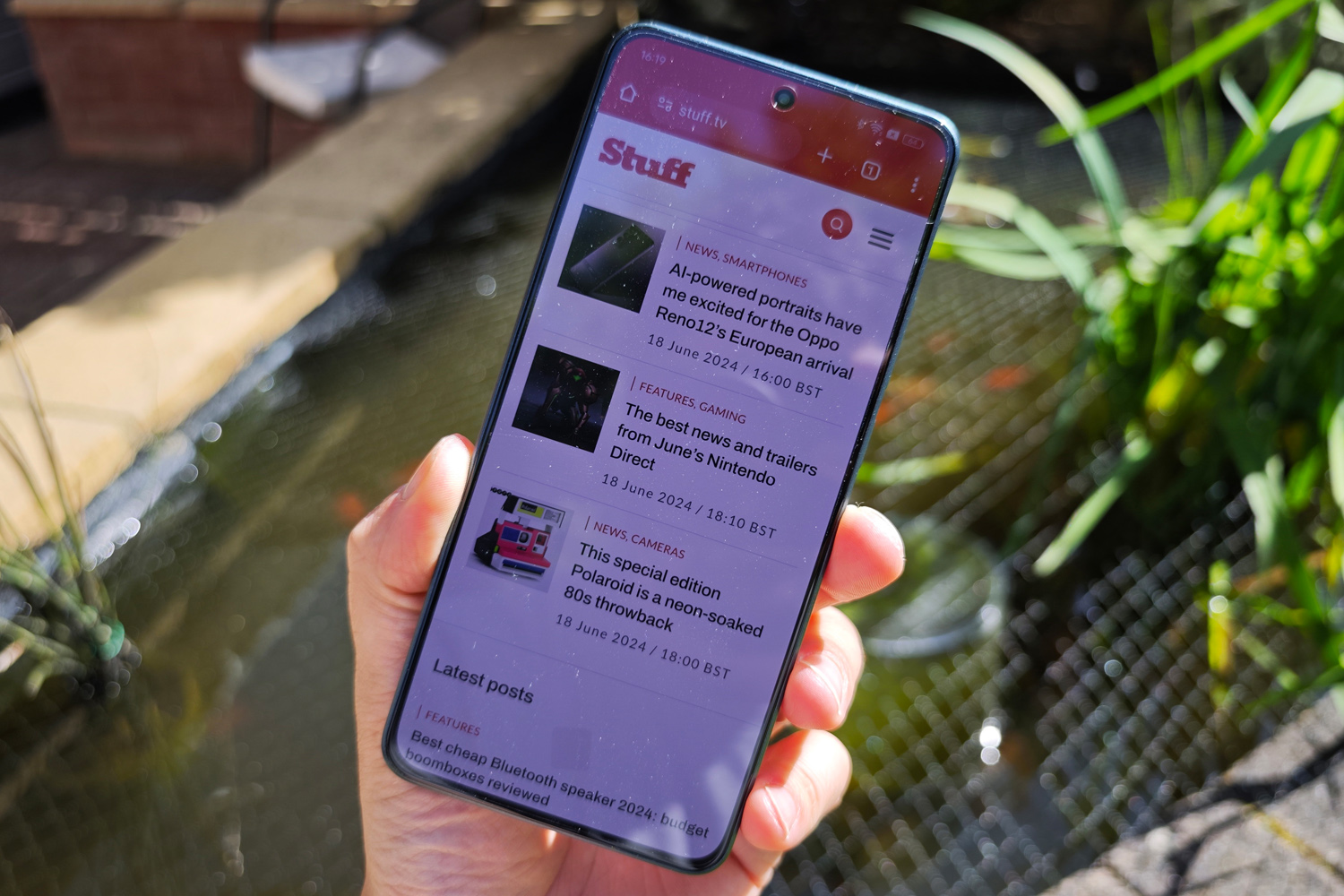
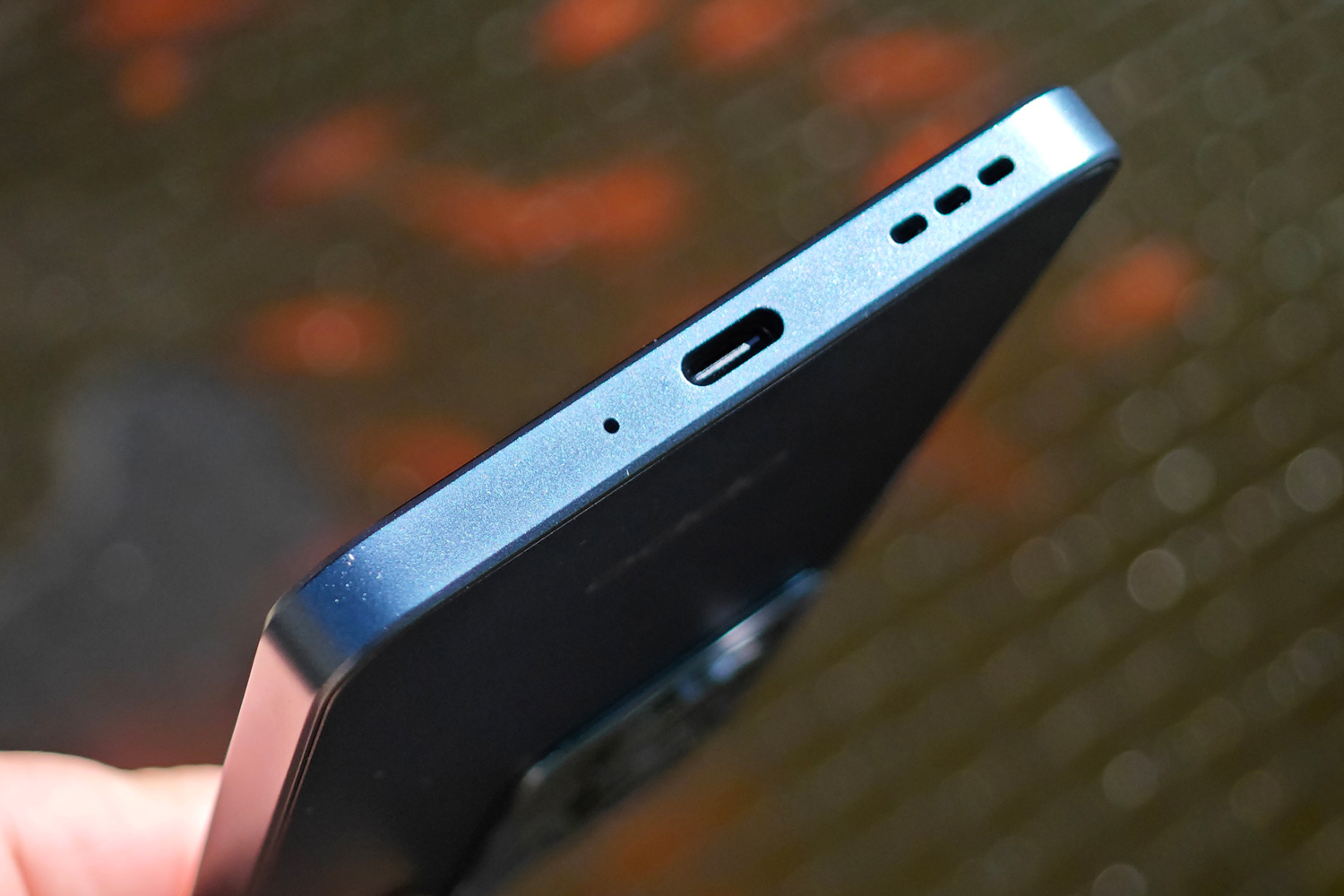
This is the second time a MediaTek Dimensity 7050 chipset is powering a Reno phone; Oppo used it for the not-for-Europe Reno 10 in 2023, and has brought it back for this new cut-price handset. Paired with 8GB of RAM, it’s a modest performer in just about every area, delivering a largely smooth Android experience – with a few stutters and stumbles along the way.
Especially demanding apps, 3D games and heavy multitasking reveal this phone’s budget roots, but for the most part I had no issues in daily use. Apps opened quickly enough, responded to my inputs in good time, and didn’t leave me hanging when playing more basic games.
Synthetic benchmark results put it just behind the Qualcomm-powered Honor Magic 6 Lite and the Nothing Phone 2a, which has a more powerful MediaTek CPU. The Oppo clawed things back slightly against the Honor in gaming tests, though I still had to drop to lower detail settings to get playable frame rates in phone melter Genshin Impact. It stayed pleasantly cool throughout testing, though, never getting toasty even under heavy load.
A 5000mAh battery has quickly become the norm for phones with 6.7in or larger screens, and the Reno 11 F is no different. Combined with a mid-tier chipset, it comfortably lasted through entire days of moderate to heavy use. If I was a little more restrained and avoided gaming, a two-day lifespan was achievable. It’s easily better than Nothing, Google and Honor’s budget efforts here.
It can refuel at 67W from a compatible power brick, although Oppo doesn’t include one in the box for European customers. Wireless charging inevitably didn’t make the cut, given the budget price target. The firm also reckons it can charge at full speed all the way down to -20°C; I can’t say I’ve ever needed to top up a phone in those conditions, but if you live somewhere particularly frosty it might be something to consider.
Oppo Reno 11 F verdict
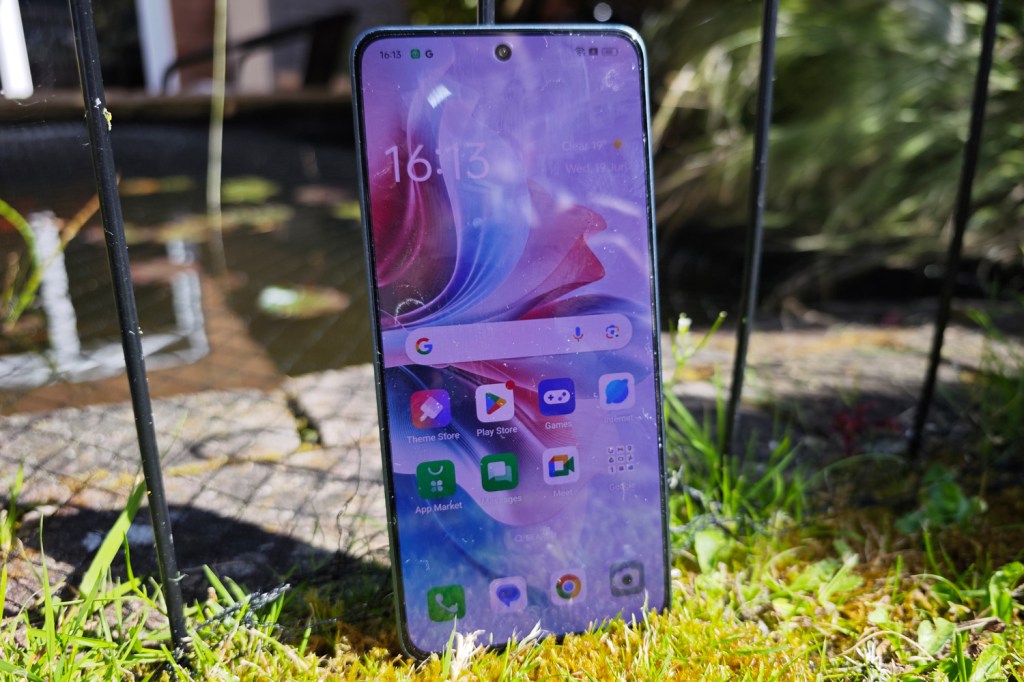
There wasn’t a single area I felt the Oppo Reno 11 F put in a bad showing, considering its asking price – but equally there weren’t many areas where it properly blew me away. And with so many alternatives to choose from, I’m not convinced this is the affordable phone for everyone.
It lacks the Nothing Phone 2a’s standout design; it can’t match the Poco X6 Pro for performance; and Oppo’s take on Android is busier than the Motorola Edge 50 Fusion. A Google Pixel 7a can be had for roughly the same money, and is the clear winner for photography.
If you want a long-lasting handset that can brave the elements, though, the Reno is absolutely worth a look.
Stuff Says…
Display, cameras, storage and battery life all rank well among affordable phones – but the Oppo Reno 11 F isn’t a strong performer, and doesn’t stand out in any one area.
Pros
Effective main camera
Big and bright OLED screen
Plenty of competition at this price
Cons
Secondary snappers aren’t that great
Middling performance
Bloat-packed software could be streamlined
Oppo Reno 11 F technical specifications
| Screen | 6.7in, 2412×1080 AMOLED w/ 120Hz |
| CPU | MediaTek Dimensity 7050 |
| Memory | 8GB RAM |
| Cameras | 64MP, f/1.7 main w/ PDAF + 8MP, f/2.2 ultrawide + 2MP, f/2.4 macro rear 32MP, f/2.4 front |
| Storage | 256GB on-board, microSD expansion |
| Operating system | Android 14 w/ ColorOS 14 |
| Battery | 5000mAh w/ 67W wired charging |
| Dimensions | 161x75x7.5mm, 177 g |

